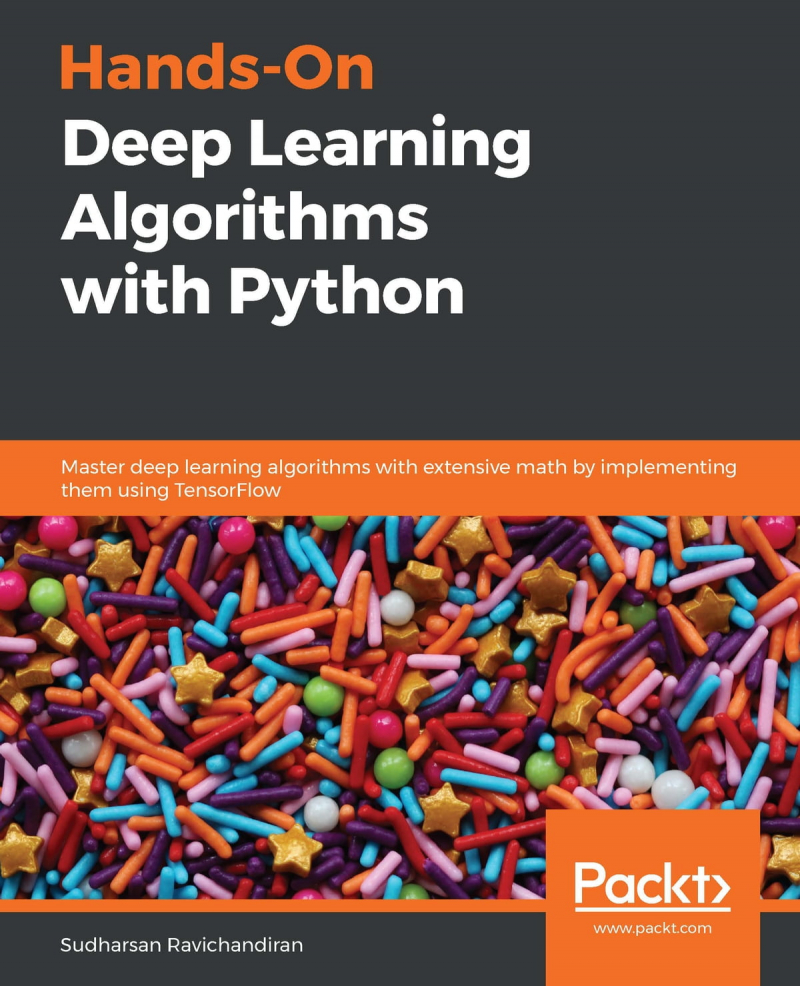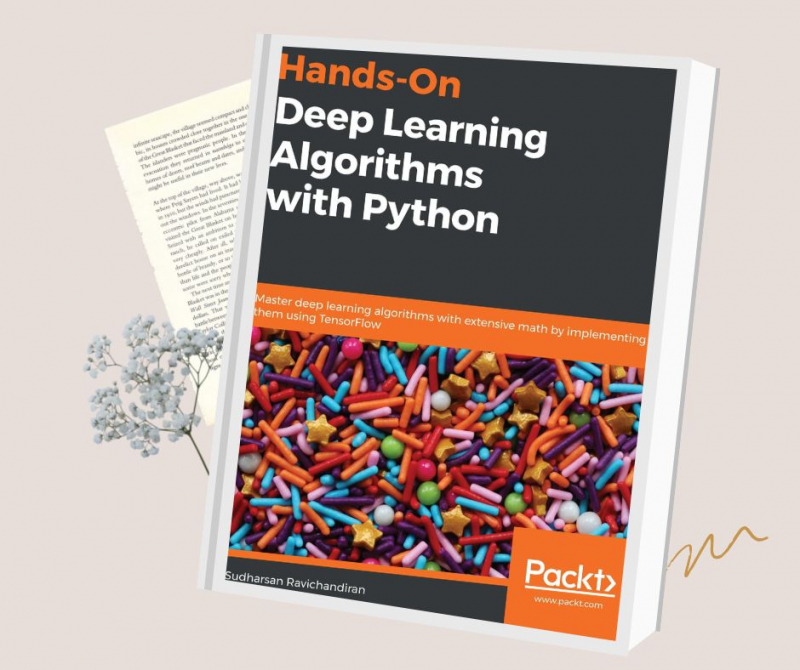Hands-On Deep Learning Algorithms with Python

Sudharsan Ravichandiran is a data scientist, researcher, AI enthusiast, and YouTuber (search for "Sudharsan reinforcement learning"). He earned his Bachelor of Science in Information Technology from Anna University. His research focuses on practical deep learning and reinforcement learning applications, including Natural Language Processing and computer vision.
Deep learning is a prominent subject in the AI space since it allows you to create multi-layered models of varied sophistication.
Hands-On Deep Learning Algorithms with Python introduces you to common deep learning methods, ranging from basic to complex, and shows you how to build them from the ground up with TensorFlow. Throughout the book, you will acquire insights into each algorithm, the mathematical principles underlying it, and the best way to execute it.
The book begins by describing how to create your own neural networks, then moves on to TensorFlow, a powerful Python-based library for machine learning and deep learning. You will next become acquainted with gradient descent variations such as NAG, AMSGrad, AdaDelta, Adam, and Nadam. The book will then teach you about RNNs and LSTM, as well as how to generate song lyrics using RNN. Following that, you will grasp the mathematics for convolutional and capsule networks, which are extensively employed for image recognition applications. Then you'll learn how to use CBOW, skip-gram, and PV-DM to teach machines how to understand the semantics of words and texts. Following that, you will investigate several GANs, such as InfoGAN and LSGAN, as well as autoencoders, such as contractive autoencoders and VAE.
By the end of Hands-On Deep Learning Algorithms with Python, you will have acquired all of the knowledge required to utilize deep learning in your own projects. The book is regarded as one of the best books on deep learning.
What you will discover:
- Implement fundamental to advanced deep learning algorithms
- Understand the mathematics underlying deep learning algorithms.
- Learn about gradient descent and its variants, including AMSGrad, AdaDelta, Adam, and Nadam.
- Use recurrent networks like RNN, LSTM, GRU, and seq2seq models.
- Learn how CNN and capsule networks are used to understand photos by machines.
- Use several generative adversarial networks, such as CGAN, CycleGAN, and StackGAN.
- Investigate other types of autoencoders, such as sparse autoencoders, DAE, CAE, and VAE.
This book is for you whether you are a machine learning engineer, data scientist, AI developer, or simply wish to focus on neural networks and deep learning. Those who are new to deep learning but have some familiarity with machine learning and Python programming may also benefit greatly from the book.
Author: Sudharsan Ravichandiran
Link to buy: https://www.amazon.com/dp/1789344158
Ratings: 4.1 out of 5 stars (from 62 reviews)
Best Sellers Rank: #1,125,989 in Books
#244 in Bioinformatics (Books)
#10,439 in Computer Science (Books)
#15,300 in Science & Mathematics











